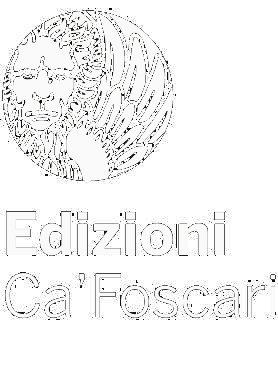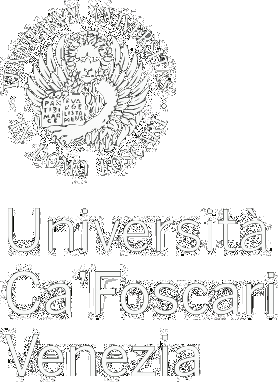Journal | Annali di Ca’ Foscari. Serie occidentale
Journal issue | 50 | 2016
Research Article | A Liberating Vomit
A Liberating Vomit
Paths of the Disgust in the Novel Die Blechtrommel by Günter Grass (1959)
- Massimo Bonifazio - Università di Torino, Italia - email
Abstract
At the core of Günter Grass’ literary work lies a marked interest for elements normally thought of as unpleasant, vile and nauseating. Part of the fascination of his books resides precisely in the possibility of observing the world from a different point of view, that is to say, from a crooked perspective which defies mainstream taste. The Tin Drum (1959) offers a clear example of this inclination: Oskar’s decision to linger in a state of extended childhood can be associated with the Freudian reflection on the human psyche, more specifically with the idea of the child as ‘polymorphic pervert’, indifferent to or even fond of things which adults are bound to find disgusting. In the novel The Flounder (1978) we find a similar constellation, although phylogenetically situated in history. In such context, the focus on food and on cooking conveys singular undertones. The use of the grotesque in Grass’ work is strictly linked to dietary elements, such as: the canned fish Oskar’s mother gulps down in order to kill herself, the insistence on entrails, the recurring use of figures of speech regarding food, and the whole context of The Flounder, in which the history of man’s violence runs parallel to a feminine cooking history rich in grotesque figures, like Mestwina or the anorexic saint Dorothea von Montau. Through Grass’ work, the idea of ‘disgust’ thus becomes a useful tool for investigating contemporary scenarios in the relationships humans establish with each other and with their history.
Submitted: May 20, 2016 | Accepted: July 31, 2016 | Published Sept. 30, 2016 | Language: it
Keywords The tin drum • Günter Grass • Food in literature • Disgust
Copyright © 2016 Massimo Bonifazio. This is an open-access work distributed under the terms of the Creative Commons Attribution License (CC BY). The use, distribution or reproduction is permitted, provided that the original author(s) and the copyright owner(s) are credited and that the original publication is cited, in accordance with accepted academic practice. The license allows for commercial use. No use, distribution or reproduction is permitted which does not comply with these terms.
Permalink http://doi.org/10.14277/2499-1562/AnnOc-50-16-27
Linguistics
-
English Support to Academic Staff
A Pilot Study at the Department of Management - Elena Borsetto, Daniel Patrick Schug
- Sept. 30, 2016
- The Interpretation of Indefinites with Adnominal Adjectives in the Sicilian Dialects
- Vincenzo Nicolò Di Caro
- Sept. 30, 2016
- Accented and Deaccented Definite Determiners in Notker’s Translation of Boethius’ De Consolatione Philosophiae
- Chiara De Bastiani
- Sept. 30, 2016
- On Noun Clausal ‘Complements’ and their Non-unitary Nature
- Guglielmo Cinque, Iliyana Krapova
- Sept. 30, 2016
- Subject Obviation as a Semantic Failure: a Preliminary Account
- Francesco Costantini
- Sept. 30, 2016
-
Vowel Harmony in Sardinian
-os/-us Plurals in Santa Maria Navarrese and Baunei - Michele Brunelli
- Sept. 30, 2016
-
Access to Knowledge
The Issue of Deaf Students and More - Lara Mantovan, Carlo Geraci, Kyle Duarte, Anna Cardinaletti
- Sept. 30, 2016
-
Oral Inter-Understanding of Words in a Phrasal Context
Lexical Transparency in the Language Couple Italian-French - Denis Passalent
- Sept. 30, 2016
- Analysis of the Errors in the Oral Production in French as a Foreign Language: a Case Study
- Annalisa Tombolini
- Sept. 30, 2016
- More Languages Than We Might Have Thought. Fewer Languages Than There Might Have Been
- Richard Kayne
- Sept. 30, 2016
Literature, Culture, History
-
“Quite another Vein of Wickedness”
Making Sense of Highway Robbery in Defoe’s Colonel Jack - Jeanne Clegg
- Sept. 30, 2016
- Adolescents and Family Crises in Victorian vs Contemporary Prose Versions of Romeo and Juliet for a Female Audience
- Laura Tosi
- Sept. 30, 2016
- Theatrical Life and Cultural Development in Liverpool Between 1740 and 1820
- Cristina Consiglio
- Sept. 30, 2016
-
An Orderly Beauty
The Translations of the Publishing House Laterza during the Fascist Regime - Elisa Fortunato
- Sept. 30, 2016
-
“Let Me Have Claudio’s Head”
The Beheading of John the Baptist as a Remote Source in Measure for Measure - Giuseppe Leone
- Sept. 30, 2016
-
Under Lowland Eyes: David Balfour in the Land of the Jacobites
Robert Louis Stevenson’s Mapping of 18th-century Scotland in Kidnapped - Stella Moretti
- Sept. 30, 2016
-
“The Essence of Individuality”
Hardy, the Regional Novel and the Romantic Legacy - Elena Rimondo
- Sept. 30, 2016
- Myths of Violence and Female Storytelling in Margaret Atwood’s The Handmaid’s Tale and Kate Atkinson’s Human Croquet
- Samanta Trivellini
- Sept. 30, 2016
- Romola: the Emerging Female Self in Renaissance Florence
- Sandra Zodiaco
- Sept. 30, 2016
- Cognitive Aspect of Time in Ulitskaya’s Story Put’ osla in the Context of Postmodern Aesthetics
- Shoghik Baghdasaryan
- Sept. 30, 2016
- Bioy Cesares: Neo-Fantastic and Deconstruction
- Emanuele Leonardi
- Sept. 30, 2016
- Nature and Predestination in William Faulkner’s “Dry September”
- Ginevra Paparoni
- Sept. 30, 2016
-
A Feeling you Cannot Name
Clocks and Time in William Faulkner’s The Sound and the Fury and Cormac McCarthy’s Suttree - Marco Petrelli
- Sept. 30, 2016
- Civilization and its Failures in the Unpublished and Lesser-known Twain
- Nicholas Stangherlin
- Sept. 30, 2016
-
Gymnastics of Affections and Fitness
Preliminary Remarks to a Bio-Poetic Lecture of Emilia Galotti - Maurizio Pirro
- Sept. 30, 2016
-
An Atlas of Images of the Dark
Walter Benjamin vs Ernst Jünger - Gabriele Guerra
- Sept. 30, 2016
-
A Liberating Vomit
Paths of the Disgust in the Novel Die Blechtrommel by Günter Grass (1959) - Massimo Bonifazio
- Sept. 30, 2016
-
The Bard in the Sea
The Silent Voice of the Mediterranean in Die Einsamen by Paul Heyse - Anna Frassetto
- Sept. 30, 2016
-
The Past Between Condemnation of Memory and Desire of Reconciliation
Ironic Paradoxes and Melancholy in Der Verlorene (Il fratello perduto, 1998) by Hans-Ulrich Treichel - Serena Grazzini
- Sept. 30, 2016
| DC Field | Value |
|---|---|
|
dc.identifier |
ECF_article_390 |
|
dc.title |
A Liberating Vomit. Paths of the Disgust in the Novel Die Blechtrommel by Günter Grass (1959) |
|
dc.contributor.author |
Bonifazio Massimo |
|
dc.publisher |
Edizioni Ca’ Foscari - Digital Publishing |
|
dc.type |
Research Article |
|
dc.language.iso |
it |
|
dc.identifier.uri |
http://edizionicafoscari.it/en/edizioni4/riviste/annali-di-ca-foscari-serie-occidentale/2016/1/un-vomito-liberatore/ |
|
dc.description.abstract |
At the core of Günter Grass’ literary work lies a marked interest for elements normally thought of as unpleasant, vile and nauseating. Part of the fascination of his books resides precisely in the possibility of observing the world from a different point of view, that is to say, from a crooked perspective which defies mainstream taste. The Tin Drum (1959) offers a clear example of this inclination: Oskar’s decision to linger in a state of extended childhood can be associated with the Freudian reflection on the human psyche, more specifically with the idea of the child as ‘polymorphic pervert’, indifferent to or even fond of things which adults are bound to find disgusting. In the novel The Flounder (1978) we find a similar constellation, although phylogenetically situated in history. In such context, the focus on food and on cooking conveys singular undertones. The use of the grotesque in Grass’ work is strictly linked to dietary elements, such as: the canned fish Oskar’s mother gulps down in order to kill herself, the insistence on entrails, the recurring use of figures of speech regarding food, and the whole context of The Flounder, in which the history of man’s violence runs parallel to a feminine cooking history rich in grotesque figures, like Mestwina or the anorexic saint Dorothea von Montau. Through Grass’ work, the idea of ‘disgust’ thus becomes a useful tool for investigating contemporary scenarios in the relationships humans establish with each other and with their history. |
|
dc.relation.ispartof |
Annali di Ca’ Foscari. Serie occidentale |
|
dc.relation.ispartof |
Vol. 50 | September 2016 |
|
dc.issued |
2016-09-30 |
|
dc.dateAccepted |
2016-07-31 |
|
dc.dateSubmitted |
2016-05-20 |
|
dc.identifier.issn |
|
|
dc.identifier.eissn |
2499-1562 |
|
dc.rights |
Creative Commons Attribution 4.0 International Public License |
|
dc.rights.uri |
http://creativecommons.org/licenses/by/4.0/ |
|
dc.identifier.doi |
10.14277/2499-1562/AnnOc-50-16-27 |
|
dc.peer-review |
yes |
|
dc.subject |
Disgust |
|
dc.subject |
Disgust |
|
dc.subject |
Food in literature |
|
dc.subject |
Food in literature |
|
dc.subject |
Günter Grass |
|
dc.subject |
Günter Grass |
|
dc.subject |
The tin drum |
|
dc.subject |
The tin drum |
| Download data |
-
file_download 12
-
search 258
-
format_quote 0





